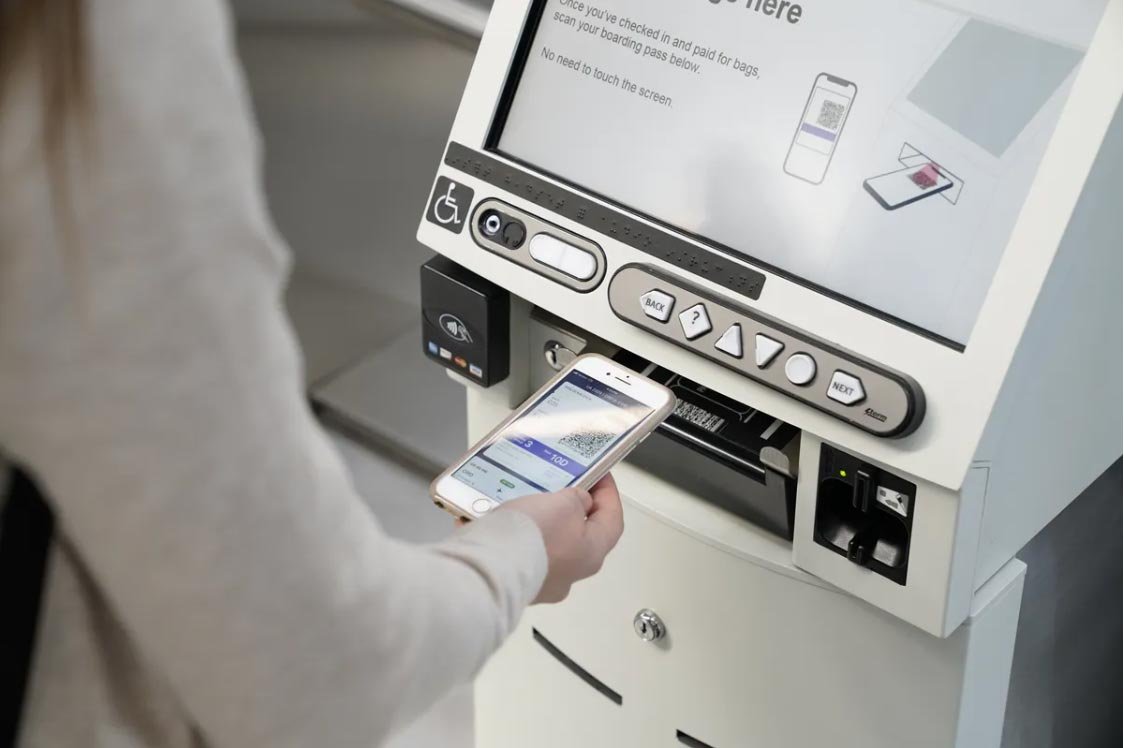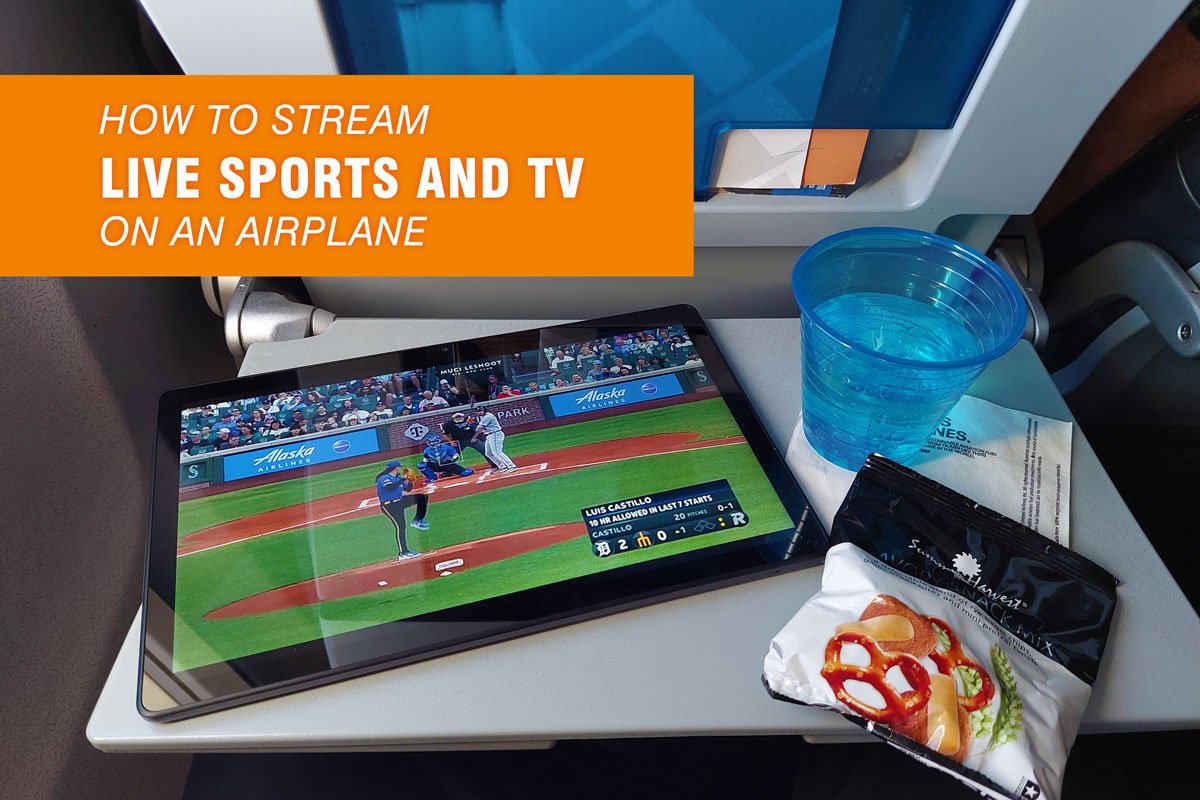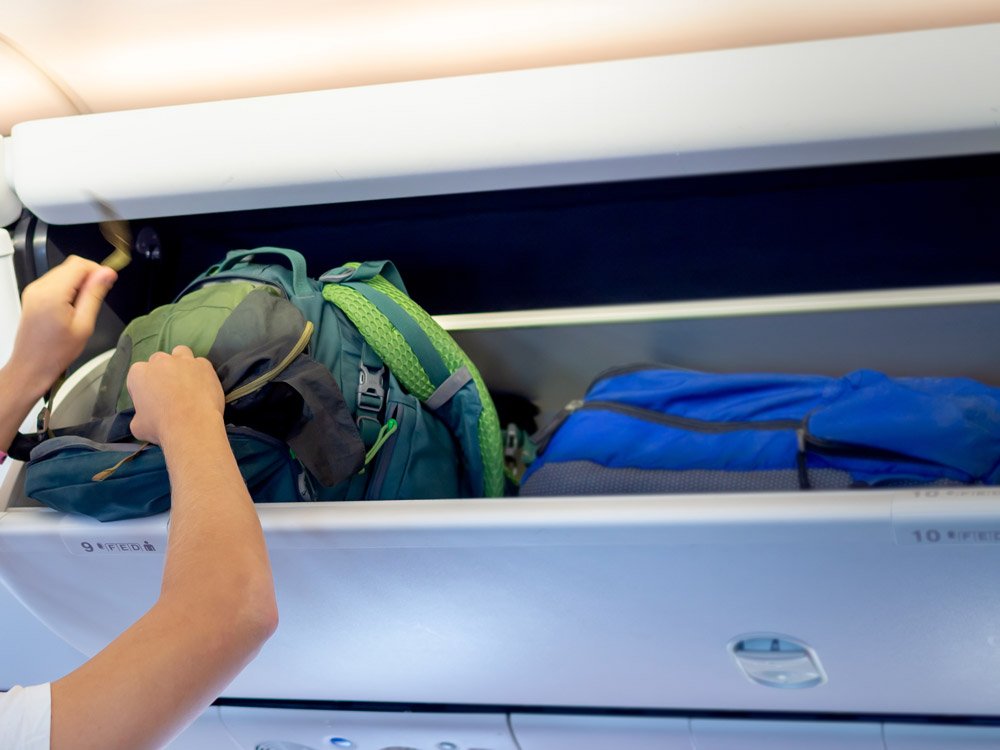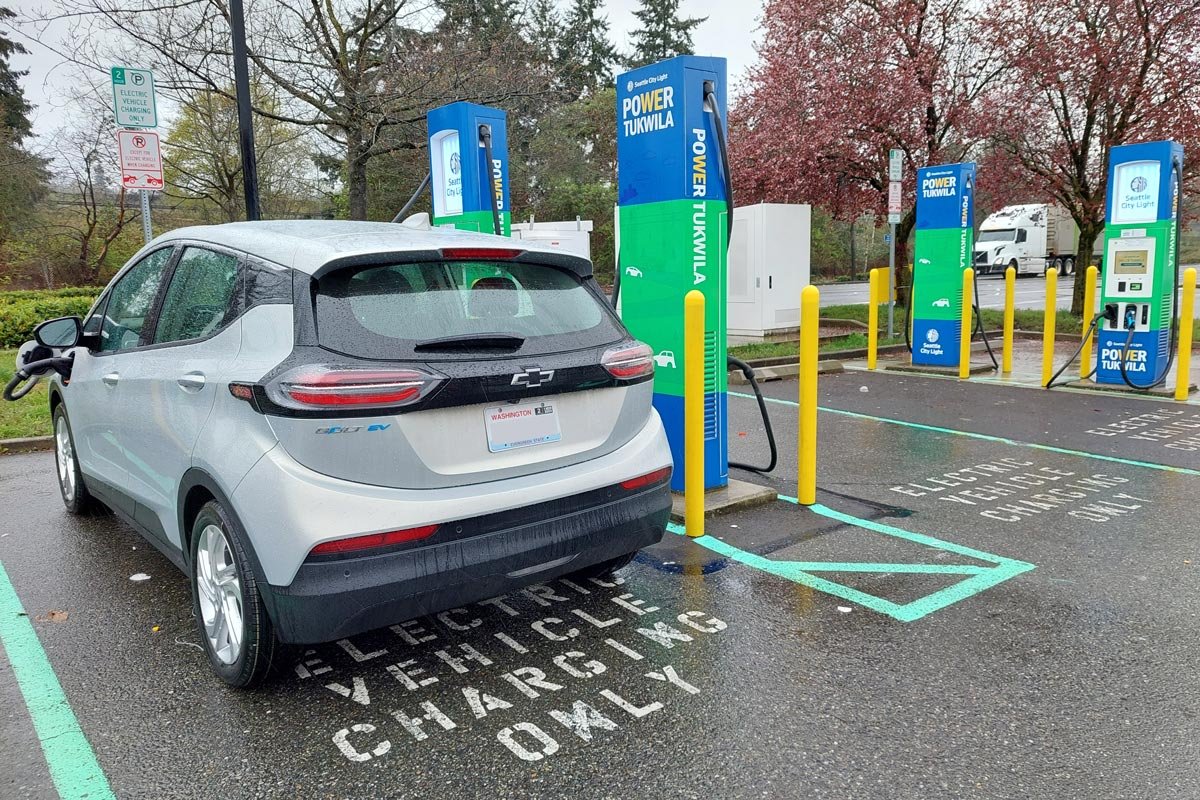Tips for Touchless Air Travel in 2020 (Part 1 – Arriving at the Airport)
Passenger using a touchless check in kiosk by scanning their smartphone.
Image: Courtesy United Airlines
Hand sanitizer, sanitizing wipes, contactless shopping and dining. The theme of touchpoints and touchlessness has transcended every aspect of life as we know it, including air travel. An emphasis on a touchless travel experience will surely be one of the long lasting, if not permanent, legacies of the COVID-19 pandemic. While as of summer 2020, it is believed that the transmission method of COVID-19 has been found to be primarily airborne, what is to say the next global pathogen won’t have a higher level of touch-based transmission?
Creating a touchless travel future is all about creating resilience for society, global health, the economy, and the aviation and airline industry. A touchless world could also reduce our dependence on the use of antimicrobial sanitizers, wipes, and disinfectants, which some argue elevates the risk of creating the next, hard-to-kill pathogen, similar to the risks associated with overusing antibiotics.
A touchless flying experience won’t happen overnight - it will take some evolution, including getting architects, industrial designers, and policymakers to reimagine airport terminal design, airplane cabin design, as well as passenger processing regulations, to create that fully touchless future.
However, there are already many aspects of the airline passenger experience that are touchless today. In this post, the first in a multi-part series, we will explore the methods that already exist, what new ones have come into play, and what you can personally do to help make your air travel experience as touchless as possible the next time you go to the airport and hop on-board an airplane.
ADVERTISEMENTTIP #1: Check-In Online and Opt for a Mobile Boarding Pass
Mobile boarding passes can reduce touchpoints in airline travel.
Image: Delta Air Lines
Most people are aware of this option already, but it never hurts to remind ourselves that the option is there, especially if you’re only an occasional flyer, or taking your first flight. Airlines commonly allow their passengers to check-in online, through their website or mobile app, beginning 24 hours before their flight.
When checking in, be sure to select the option to send your boarding pass to your mobile device. Having your boarding pass in-hand before you arrive to the airport will allow you to skip the ticket counter, the check-in kiosks, and the crowds – all pertinent measures to help prevent the spread of a pathogen such as COVID-19 – and it will allow you to head straight to the TSA security screening checkpoint.
Online check-ins will give you the option of printing a paper boarding pass on your home printer, but we emphasize using a mobile/digital boarding pass to help foster a touchless process throughout your entire journey. For whatever reason, probably human nature, there is a certain tactility about paper that lends itself to being physically exchanged between yourself and others as you make your way through the airport. But very rarely do mobile electronic devices, such as phones and tablets, get physically exchanged when needing to present your boarding pass to a TSA officer, customer service agent, or boarding agent.
TIP #2: Take advantage of airlines’ touchless bag-check options
Alaska Airlines has had a self-tag at home program for checked baggage since 2014.
Image: YouTube/Alaska Airlines
If you are checking a bag, you unfortunately won’t be able to bypass the ticket counters. However, several airlines are offering ways to limit touchpoints associated with this process.
Alaska Airlines allows most passengers traveling domestically within the United States to print out their baggage tags on a home printer, thereby enabling passengers to skip the kiosks at the airport that are touched by so many. With this option, all an Alaska passenger needs to do is tag their bag at home, stop by one of the airport bag drops, and they can quickly continue on their way. Alaska has actually been offering this option since March 2014, but in 2020, this seems more pertinent than ever. Over the last six years, the program has grown to include almost all of the airline’s domestic airports. A current list of airports that support this program can be found on Alaska’s website. Passengers will need to place their printed bag tag in a clear pouch supplied by Alaska, which can be picked up at the airport and subsequently reused for future flights.
Other airlines such as United, American, and Air Canada have recently updated the software on their check-in kiosks to allow passengers to simply walk up to a kiosk and scan their boarding pass (presumably already on their phone) to automatically print out prepaid bag tags without having to touch the kiosk. Alaska is also in the process of rolling this out for those passengers who don’t or aren’t able to use their print-at-home bag tagging program.
The innovations are not just limited to North America. Several airports abroad have also rolled out kiosks that are controlled by gestures, such as head movement.
ADVERTISEMENTTIP #3: Don’t touch the glass on the TSA boarding pass scanner
After check-in, you’ll be heading through TSA. When you reach the point where you need to present your ID to the TSA officer and scan your boarding pass on the validator, pay special attention to not make physical contact with the scanner. Speaking from experience as a frequent traveler, many fellow passengers seem to lay their phones directly onto the glass of those scanners. This is absolutely not necessary. Studies have shown that phones can be dirtier than toilet seats, so hopefully the thought of hundreds of other phones making contact with that same piece of glass will remind you of this. The boarding pass scanners at TSA (and also the ones at the gate for that matter) are usually good enough to read your phone’s display from a short distance. If your screen brightness is turned up, you should be able to safely hover your phone about a quarter inch or centimeter above the glass and still get a successful read of your boarding pass without making contact with the scanner.
PENTA Scanner, by DESKO, is used at TSA checkpoints to validate boarding passes.
Image: DESKO
A boarding pass validator scanner sits to the left of a TSA agent at Pittsburgh International Airport.
Image: TSA
TIP #4: Wash your hands after going through TSA
Those plastic bins that we all encounter are part of airport security. Unfortunately, there are currently no means to fully eliminate their necessity. The best we can recommend at this point is to wash your hands as soon as you get through TSA. With how airports are architecturally designed, most will have restrooms within a short walking distance after the TSA checkpoint, which should allow you to get your hands clean before you go to the gate or grab a bite to eat.
There are some emerging technologies out there that may begin to reduce the dependence on bins, but won’t necessarily eliminate their use. Next-generation computed tomography (CT) scanners are beginning to be rolled out to TSA checkpoints at large airports across the US (such as Atlanta, Chicago, Los Angeles, Miami, New York, etc.). The new technology allows officers to get a three-dimensional image of the contents of passengers’ carry-on bags, an advantage that will allow passengers to leave some belongings, such as laptops, in their bags, helping to reduce physical contact with plastic bins.
An example of a computed tomography (CT) scanner, the ConneCT scanner, by Analogic.
Image: Analogic
Computed tomography (CT) scanner technology will generate a three-dimensional (3D), navigable image of a passenger’s bag contents, allowing passengers to leave more items in their bags.
Image: Analogic
Summary
We hope you’ve enjoyed the start of this multi-part series on touchless air travel in 2020. The next part of this series will cover the concourse and boarding areas, as well as steps you can take on-board the actual airplane to have a travel experience that is as touchless as possible.
ADVERTISEMENTRelated Content















